It depends on what you want to accomplish. But, first of all, check your owner’s manual to see if your vehicle manufacturer recommends one instead of the other. If you want to ensure removal of nearly all the old transmission fluid, get a transmission flush.
Here’s what we’ll cover:
What is a Transmission Flush?
The benefits of a flush are self-evident: all the old, dirty fluid is replaced with fresh, high-quality fluid. And, as you can see in the image, new transmission fluid is preferable to old fluid.
As a result, your transmission should run cooler and receive maximum protection against wear to clutches, gears and bearings.
It should also shift consistently and crisply since the new fluid will provide the correct frictional properties (old fluid loses its frictional properties over time). In fact, a transmission that shifts hard, hesitates or jerks is sometimes due to worn fluid.

Not only that, but performing a flush helps clean the transmission.
Sludge and other contaminants can accumulate in the fluid due to extreme heat breaking down the fluid. These contaminants circulate throughout the transmission before lodging in the filter.
Before the filter can safely capture the contaminants, however, they can lodge in the narrow fluid passages inside the valve body, leading to poor shift quality.
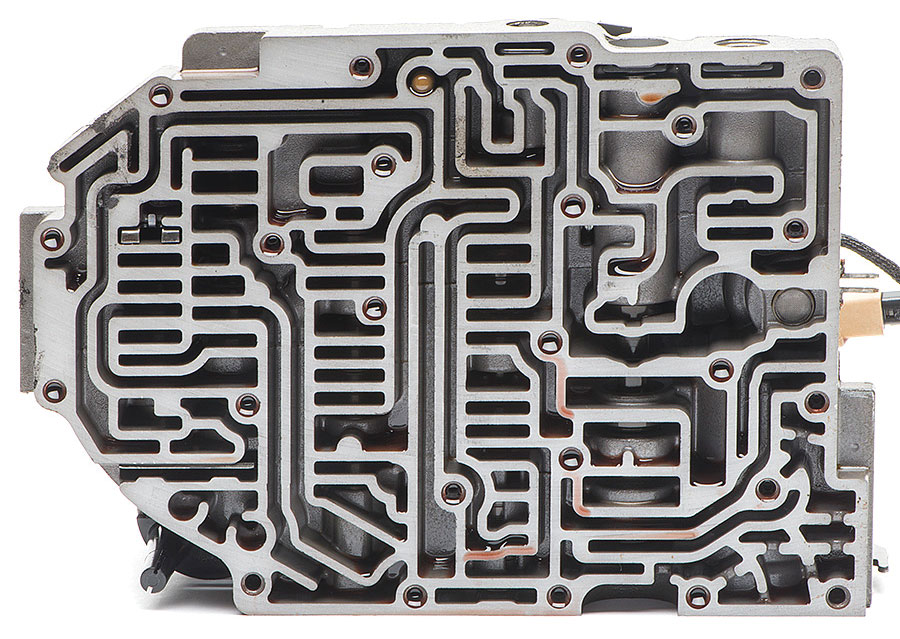
Performing a flush also allows you to use a flush additive to help clean the transmission and more effectively remove accumulated sludge and other contaminants.
Downsides of a Transmission Flush
For one, it’s more expensive. And some people warn against performing a flush on a transmission using old, dirty fluid.
The flushing procedure may cause some fluid to move in the opposite direction of normal flow due to eddy currents, which may increase the risk of dislodging debris and causing it to settle somewhere it shouldn’t.
What is a Transmission Flushing Machine?
A typical flushing machine uses hoses that connect into the transmission cooling lines. It drains the old fluid and holds it inside the machine while replenishing the transmission with new fluid.
Unlike a simple pan-drop, a flushing machine removes just about all the old fluid, including the fluid inside the torque converter.
Transmission Flush Cost
Since the procedure uses new fluid to perform the flush, it requires additional fluid beyond the transmission’s final capacity. Plus, additional fluid is needed to fill the flush machine reservoir and lines. Some fluid is also used to prime the pump. Those extra quarts are where most of the cost lies.
Your final transmission flush cost will depend on a few factors:
- The transmission’s total-fill capacity
- Where you have the service performed
- The cost of the transmission fluid
Say you own a small car that takes about eight quarts of transmission fluid and you have the service done at the dealership using the original equipment manufacturer (OEM) fluid that costs about $20 per quart. They also replace the transmission filter and pan gasket.
In this case, a transmission flush will probably cost about $250, depending on where you live.
But, say you roll in a RAM* 2500 that takes more than 15 quarts of transmission fluid. Your cost to flush the transmission can quickly surpass $400.
However, independent mechanics usually charge less than dealerships, throwing another wrinkle into the math.
Your transmission flush cost can range anywhere from $150-$400, depending on vehicle size and whether you visit an independent mechanic or the dealership.
Plus, every so often you see mechanics offering a transmission flush for around $100 to get you in the door, so keep your eyes open for deals. Be warned that these deals always include a limit on number of quarts of fluid used, so don’t expect to get the tranny on your RAM 2500 flushed for that price.
Bear in mind that many repair shops and quick lubes are particular about the fluids they use in their flushing machine, so it may be difficult to find one that accepts customer-supplied fluids. To avoid cross contamination, flushing machines need to be cleaned between products.

Transmission Fluid Change Cost
So, how much is a transmission fluid change?
Again, it depends on the transmission’s capacity, where the service is performed, filter & gasket cost, and fluid cost. Since a pan-drop requires less fluid than a transmission flush, it will cost less.
Here, I’ll go to the well of personal experience. I dropped the pan on my old Geo Prizm,* drained about three quarts of fluid and replaced it with AMSOIL Signature Series Synthetic Automatic Transmission Fluid, replaced the filter (the gasket was still good) for a cost of about $60.
I could have paid less had I used AMSOIL OE Synthetic Automatic Transmission Fluid, which is geared toward passenger cars and trucks, but a Geo Prizm deserves an overengineered fluid designed for towing and hauling, in my opinion.
Now let’s use my in-laws’ heavy-duty diesel pickup they use to pull a camper around the country.
A pan-drop requires seven quarts of fluid and a larger, more expensive, filter. They’re not avid DIYers like me, so tack on another $100 or so to pay the mechanic, meaning their transmission fluid change cost is going to run about $275.
Again, your transmission fluid change cost will vary depending on vehicle size, who performs the service and filter & gasket cost.
If you do it yourself on a small vehicle, it’ll cost $50-$75. Pay a dealership to change fluid on your heavy-duty truck, and plan on paying $200-$300, especially if you use the OEM fluid.
Pan-Drop Transmission Fluid Change
If you have reservations about a flush, go with a pan-drop instead.
While it reduces the risk associated with flushing old, dirty fluid through the transmission, a pan-drop also has downsides.
- Removes only about a third of the fluid, which reduces the performance of the new fluid. The rule of thumb is 3 pan-drops are needed to remove most of the old fluid, which can be time-consuming.
- Can be a mess, in addition to time-consuming.
- Can be a pain on some vehicles.
I can tell you from experience that a pan-drop can be a bigger job than you think.
You may have to remove plastic splash guards or metal skid plates to access the transmission pan.
In case you haven’t been under your vehicle in a while, plan on encountering rusted, stuck bolts if you drive in wet, snowy conditions.
Don’t be surprised if you crack a splash guard in one or two places as you try to remove/reinstall it.
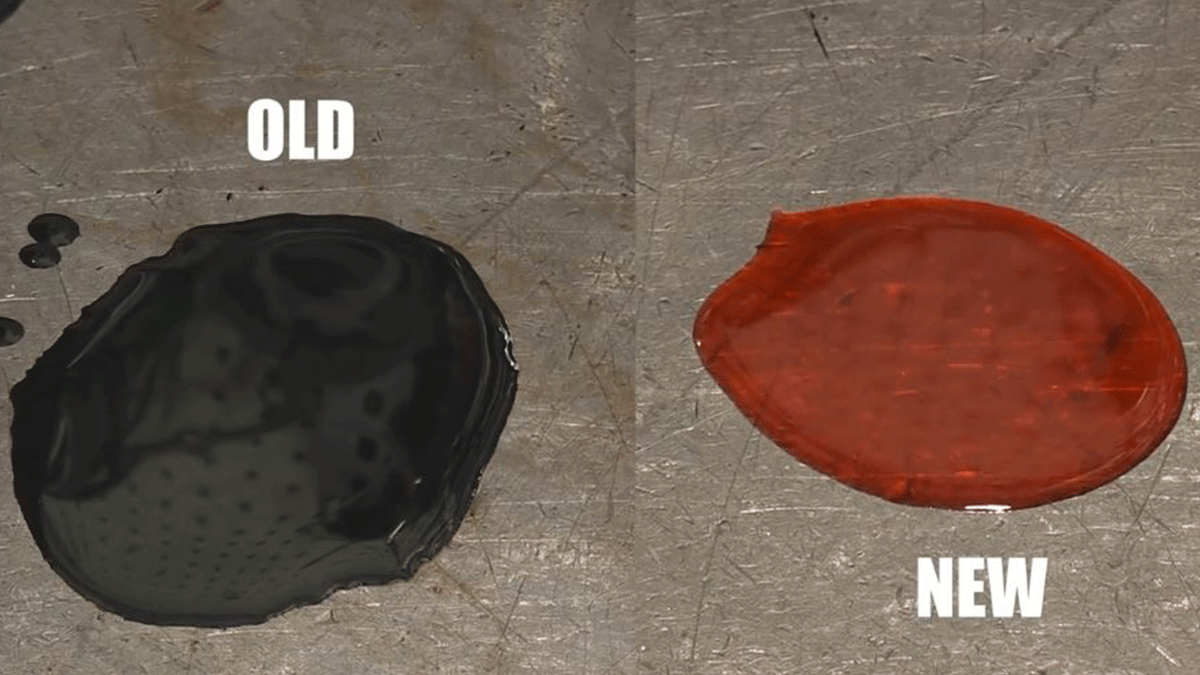

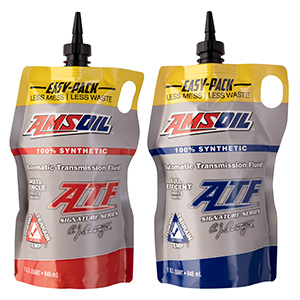


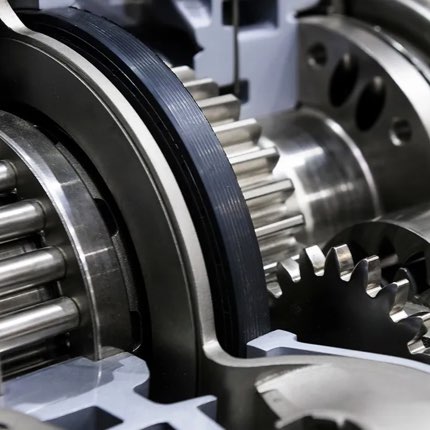



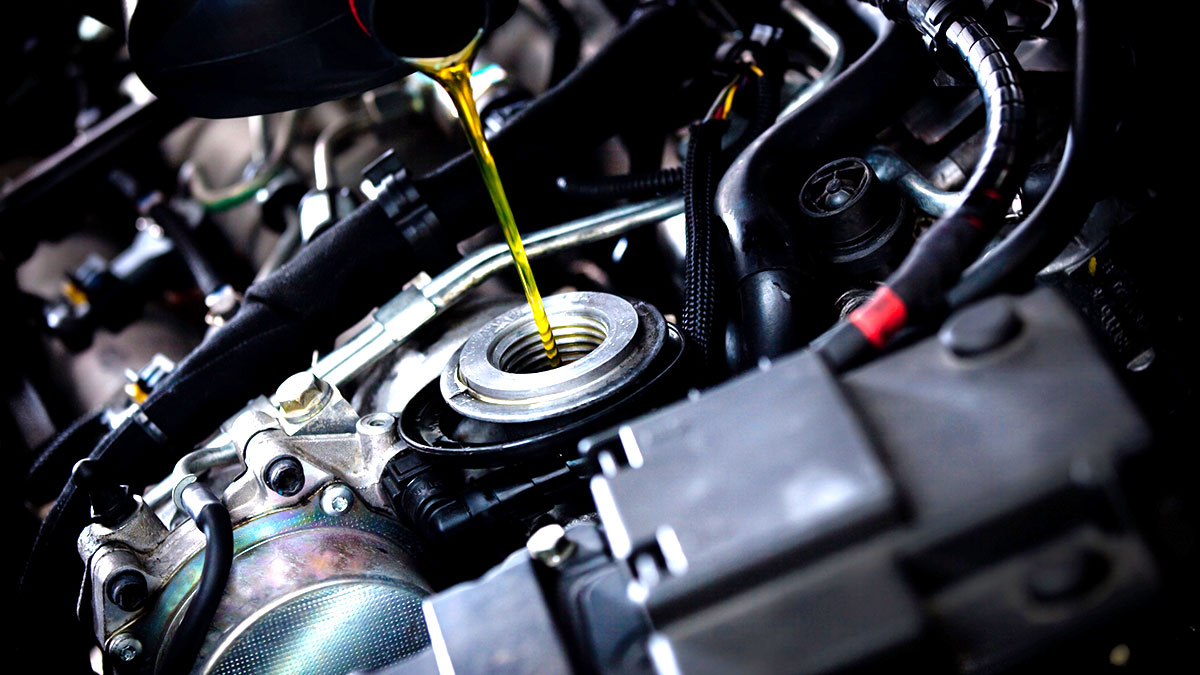
I own a ford with a drain plug for the converter. Is a flush even worth considering?
Hi Brad,
The advantages to the flush are the use of a cleaning additive to help remove contaminants from the tranny. That’ll help give it a fresh start prior to new fluid. The other obvious benefit is that the shop will do the work for you.
If you’re a DIYer and want to save some money, a pan drop should work nearly as effectively. Since you can drain the torque converter, you should only need one change as opposed to 2-3.
Thanks,
John
If the fluid is red or brown and it doesn’t smell burnt, I’d say drop the pan, replace the filter. Remove that bolt from the torque converter and drain it as well. Keep in mind how much you drain out after because a pint of transmission fluid will be lodged in the valve body. I’m assuming this is the 4r70w in this vehicle.
If you go the flush route, you can remove the lines from the transmission, but remember, 8.5 quarts will have to come out of that torque converter if you don’t want to remove that bolt but the benefit of this route is it’ll flush your valve body and push it through the cooler lines. You can use the cooler line removal to drain your transmission, but have someone stop the vehicle once the flow starts to slow. This makes it a much less of a messy job.
Approx 14 quarts to complete the service.
On my Titian, I have a drain plug for the tranny, so I just do the poor mans flush…
I used to have a trans shop that offered Amsoil and would do a complete drain of the torque converter on my old Caravan and use the pan removal process. The shop closed due to the owner’s health. With my ’06 Volvo V70R there is no service requirement, but I bought it used and have a Volvo independent shop that has to use the cooler lines with the transmission operating to flush old fluid with new until it runs clean. This is the only way to refresh the fluid. Took 16 quarts for best result. It is a very specific process. My previous Volvo required a similar process, but it had a dipstick that made level checking simple. Both these transmissions responded well to fluid changes.
Thats how i do mine as well. Not that i m very experienced, but from my research its the safe and cheap way to replace all the fluid with out moving debry in compromising places.
If doing a full flush with the machine, i personnaly would take out the valve body and give it a cleaning by hand once its apart. Its amazing how much particles settle down in there…
If you are doing a pan flush without a drain plug on the pan. Would it be a good idea to have a plug installed on pan once you have the pan removed the first time? After that you would not have to drop the pan every time. Which would help save the mess and the time it takes to remove the fluid and add more….
Hi Fill,
In theory that sounds sensible, but keep in mind your factory warranty. I suspect doing so would void the warranty, so I recommend asking the dealership first if that’s an issue for you.
Thanks,
John
How often should you get the transmission flushed checked by a pro? And, can a noob perform these procedures by themselves?
Hi Lary,
Check your vehicle owner’s manual for recommendations regarding flushing or checking your transmission.
As for a “noob” performing a pan-drop, sure it can be done. It’s more difficult on some vehicles than others. I suggest consulting YouTube for some demonstration videos first to see what you’re in for prior to proceeding. If said “noob” has never popped the hood on his vehicle, I suggest starting with something simpler, like an oil change.
Thanks,
John
Transmission flush, as well as replacement of the transmission fluid, are crucial to keeping the transmission in working order. Transmission fluid reduces friction among different components of the transmission. However, such fluid loses its lubrication ability over time and thus needs replacement. Besides, the deposition of debris in the transmission also affects the performance of the vehicle. Skipping the transmission flush or replacement of the transmission fluid could have a disastrous outcome.
While your manufacturer’s manual will tell you how often you should perform maintenance per each component, consumers almost never read their manuals, and very few shops whether dealerships or independents, know much if anything about oil of any kind, or what the basics are, ie. “what does the “W” mean on say a 5W – 30, pretty sad! When they say “weight” , it’s all I can do not to cringe, and I wonder where they got their education! I politely try to tell them why it means “winter grade”, and some still don’t get it. A lot of consumers still don’t get the extended service abilities of AMSOIL because of the quality and the difference between 100% synthetic vs. petroleum. I also get a lot of customers that are being mislead by their mechanics, telling them that putting new fluid in a transmission with 100,000 mile plus on it can ruin the transmission! ??? What kind of thinking is that? If the transmission is serviced as it should, it shouldn’t be a detriment, but an asset, it’s simple maintenance and should be performed with the best fluids available, and that will make the components perform as they should. Luckily I have had a few shops prove to themselves how much better AMSOIL is, when a customer complains about a shuddering transmission and lack of shifting. When given the choice of a transmission service or the cost of a new transmission they choose the service, and then the miracle happens and it’s magically “fixed”, because the shudder is gone and it’ shifts like it should. That reinforces the bond between me and my customers/ service providers! I recently performed a transmission service on my 77 Bronco with a C-4 and Super Shift (ART) with over 100,000 miles on it, it was spotless inside, and the pictures I took of the inside of the case, prove that AMSOIL is the best! Some manufacturers claim a “lifetime” service with their fluid, which only means the lifetime of the warranty, which is usually 100,000 miles, or less. Consumers will shudder at going more than 3,000 miles on an engine oil & filter change, but totally neglect every other component on their precious vehicle! Differentials and transmissions are the most neglected! They say that it doesn’t need changing, yet stop far short of the engine recommended oil change of say 12,000 on newer vehicles? All I can do is try to educate them, I can’t force them, and in the end if they insist, hey, it’s more profit for me.
Not a word mentioned about changing the transmission filter, which in most vehicles requires a pan drop to do. What good is a fluid change without a filter change as well.
Hi Eric,
As noted under the “Tips for Performing a Pan-Drop” section:
• Don’t forget the new filter and pan gasket.
Thanks,
John
Engine oil filter and engine oil are changed at every 10,000 kms. AC filter and Air filter replacement depends on condition.
Don’t use synthetic oil use normal/mineral oil where ever you drive in India. service centre will always try to fool you by recommending synthetic engine oil which is not required.
Regards
I want to buy a creta which one is best diesel or petrol
Regards
Good work
Regards
I have 100,000 miles on my vehicle. I have a drain plug on the transmission and would like to just drain the fluid and add new. Can I use the flush or is that a bad idea since I won’t be flushing all of the old fluid out? Also is a filter change really necessary?
Hi Bruce,
We don’t recommend using Engine & Transmission Flush unless you can remove nearly all the old transmission fluid. Draining the fluid will only remove about one-third to half the fluid. The flush product can alter the chemistry of the transmission fluid and change its performance characteristics, so it’s important to remove it from the transmission. And, yes, you need to change the filter, too.
Thanks,
John
Somewhere on the webpage it says “You can then drive the vehicle for a while, drain the fluid and change it again. Do this 2-3 times and you’ll remove nearly all the old fluid and perform a sort of poor-man’s transmission fluid flush.”
2-3 times does not remove “nearly all the old fluid” because the fluid is always getting mixed together.
1 change leaves behind 2/3 of the old fluid.(66%)
2 changes leaves behind 2/3 times 2/3 of the old fluid (4/9, or 44%)
3 changes leaves behind 2/3 times 2/3 times 2/3 of the old fluid (8/27, or 29%)
Hi Don,
You’re right, which is why I qualified the statement by saying “nearly all the old fluid…” I see your point and will revise to say “most of the old fluid…”
Thanks,
John
Let me start off by saying yes a flush is better than a pan drop. I build transmissions for a living and old fluid will gunk up the works in the long run but if you havent flushed your tranny in 100,000 or more miles the idea is leave it alone till it acts up or it may not move again if you try to all of a sudden flush it. I’ve seen this occur on more than a few occasions where the customer took it to a lube shop and they flushed the transmission and, ‘Oh God, why won’t this vehicle move?!’ It’s a little thing called clearance guys and gals that is created by normal wear and tear on the clutches of the unit. Not only do you have a clearance issue you washed off all the soft metal and fibers that were actually taking up clearance. So what happens you crank up and try to move the vehicle and it neutrals out….now you smoked the clutches and need a soft rebuild at least. If you flush it like you’re supposed to, its not such a shock to the clutches and they can properly compensate, therefore you have a successful flush. Trust me, don’t trust me; I had a transmission builder of 35 years teach me the ropes and now I’ve been building them for over 5 years now not to mention been a mechanic for almost 20 years. P.S. AMSOIL makes great products and I’ve seen them in action first hand on the dragstrip as well as the road.
I have a 02 Ford Taurus. I noticed the last time I drove it that the transmission was acting funny, and the transmission light came on. I got a code 755, which means that the shift selector b valve was possible going bad, or the fluid needs to be changed. The car only has a little over 87 thousand miles on it, but it has set for almost a year, because of overheating problems. Someone put the thermostat housing in backwards. What would you recommend.
Dear TransmissionsRUs,
So what do you do when the transmission does act up?
Is there anything one should do if you have gone 160 k+ miles without any attention to the transmission (2015 350 Ford Transit Wagon full-size van)?
Thank you for your time.
Thank you John for sharing the information. I learned a lot from reading it. I have a 2000 Chevy Silverado 1500 5.3L engine. Please share some more information with me. Again, thank you!
Great blog. Very interesting reading.
I have the ZF5HP24 in an ‘03 XJ8 with just 31k on it. Yes, just 31,000. I have a low frequency hum that occurs only between 50 and 60 mph on light acceleration. It disappears if I back off the throttle or drop manually to 4th. I was advised by a Jag tech who did tranny work to have all the fluid replaced while getting an upgraded main pressure regulator valve installed. The tranny-only shop doing the work waved me off a full replacement and recommended a drain-and-fill, which I did as they do auto boxes all day.
The noise remains. The tranny shop said they heard it but could not definitively trace it to the transmission. My Jag-only Indy shop drove it and said they think it might be in the diff.
So, my question to you: A) have you encountered a similar noise in a transmission and B) would a full fluid exchange that gets everything out of the torque converter be likely to make the noise go away? I should add that the tranny operates spot on, shifts at the right points and the TC seems to properly engage at the right points.
Thanks in advance for any light your experience might shed on this.
My Dodge Ram 2017 has a sealed trans and rear end but I’m sure I still need to change them? What do you recommend!
Hi Tim,
We have an entire post about whether you should change fluids in a “filled-for-life” tranny or differential. The short answer is, “Yes,” for the reasons spelled out in this post. It’s a quick read, so give it a look.
Thanks,
John
I have a 06 Acura TL. I am so afraid to have my transmission fluid changed bc if all the horror stories you hear from people that bc it has near 200k on it it may not run again or it may go awhile and then go out. Is this true for a fact someone please help me. Also have concerns with timing belt kit as well. People say leave it alone but all I’ve read says it’s time for it to be changed. Thanks for any help.
Hi Brandy,
Changing transmission fluid is a normal part of maintenance. If you check the owner’s manual, Acura will suggest how often to change it. The horror stories are often from people who flushed a poorly maintained transmission after years of neglect. Doing so can loosen sludge and other debris, which may cause problems. Again, that doesn’t apply to a well-maintained transmission. If your car has a transmission-fluid dipstick, I’d check the fluid and look at its color. Is it black and burnt-looking? Then you may have sludge issues. The fluid should be pinkish or red. If it is, flushing it shouldn’t pose any problems.
If you’re nervous about a flush, skip it and just have the fluid changed. It won’t remove all the fluid, but it will help you sleep better.
Thanks,
John
My daughter’s 2001 Honda Civic 1.7L vtec Auto (I know, notorious trans problems) suddenly started slipping and whining last night. On a 5-km commute home, it lost almost all drive power and I had to push it home the last few blocks. I’ve read the issue is often the internal screen (not serviceable without a tear down) clogging with clutch fibre and starving the trans. Any chance a proper flush would remove the screen junk and get her on the road again, without a rebuild costing more than the car?
Hi Graeme,
I’m sorry to hear about the problems your daughter is having with her car. I wish I could say flushing the transmission would be like a silver bullet, but it’s unlikely if the screen, indeed, is clogged with clutch material. A flush will likely remove some of the debris, but it would be like putting a Band-Aid on an axe wound. It sounds like you need to have the transmission serviced.
Of course, if you just want to take a shot in the dark, it’s worth a try since it won’t cost you much. If it were my car, I’d try a flush and see what happens. Try the least expensive option first, then escalate to the more expensive fixes.
Good luck,
John
I know this is an older post but I would go with a drain & refill 3 times and it just may clear your problem up. Has it never had the fluid changed out at all in 20 yrs?
If you look in the service manuals from all of the manufactures they all recommend against flushing they recommend drain and fill. IMO if you flush a transmission they are not going to cover the warranty on a transmission which was serviced improperly.
This is from GM: https://static.nhtsa.gov/odi/tsbs/2020/MC-10173416-9999.pdf
“The use of external transmission fluid exchange or flush machines is not recommended for the automatic or manual transmission. Use of external machines to replace the fluid may affect the operation or durability of the transmission. Transmission fluid should only be replaced by draining and refilling following procedures in Service Information (SI). Refer to Automatic/Manual Transmission Fluid and Filter Replacement.”
I would like to make sure the converter gets flushed, since I insist on using AMSOIL Signature Series ATF and don’t want it contaminated with old fluid, but doesn’t that make the cost of a complete flush prohibitive?
Today, I was simply perusing along and happened upon your blog. Simply needed to say great blog and this article helped me a lot, because of which I have found precisely what I was looking for.
I have 36K miles on my 2016 Chevy Colorado. I remember reading I needed to either flush or drain the tranny fluid at 30K miles but have misplaced my manual. Can someone advise me on which should happen, a flush or drain it?
Thank you!
Hi Rhonda,
You can find a digital copy of your owner’s manual online. That will provide instructions on what to do.
Thanks,
John